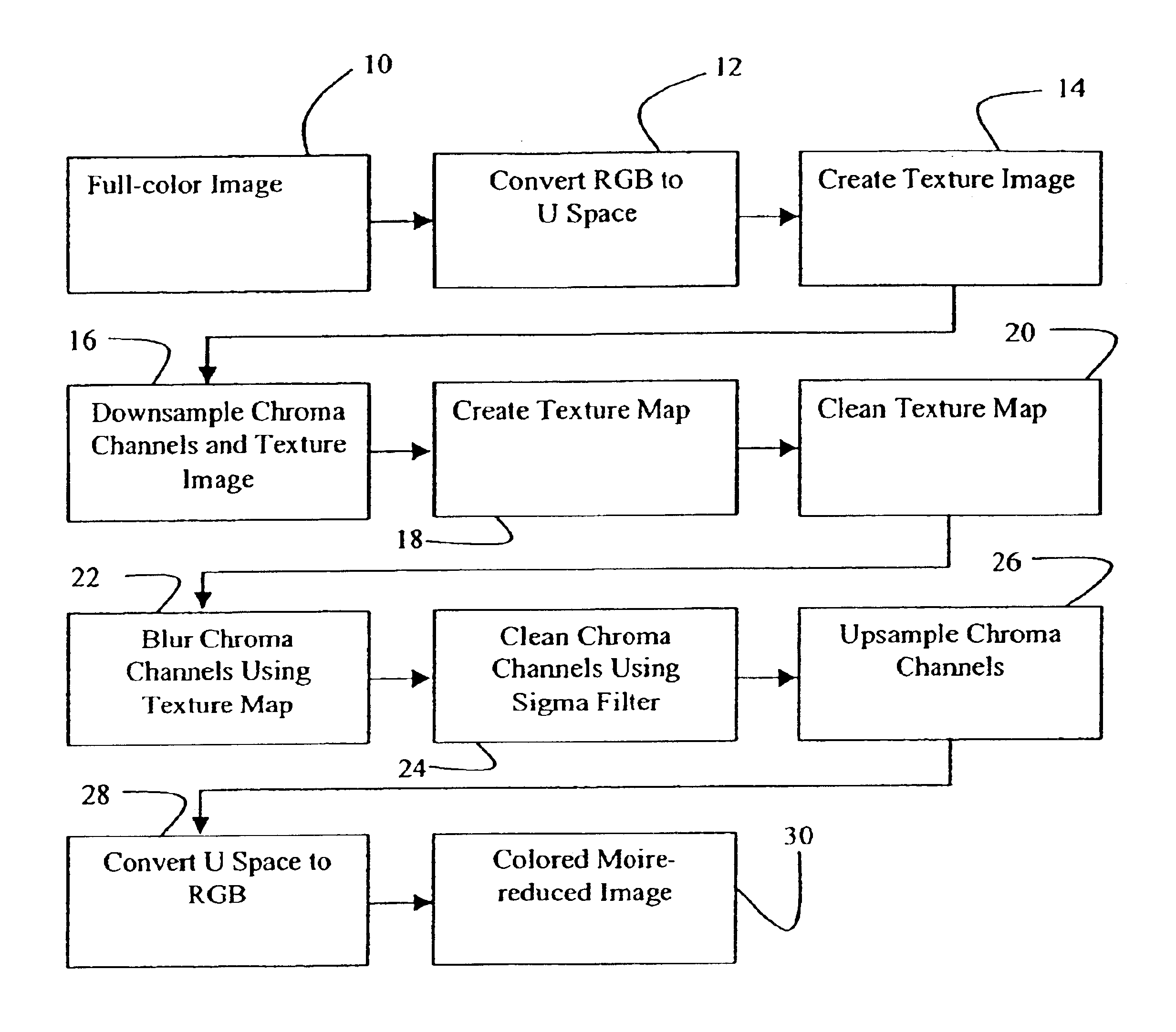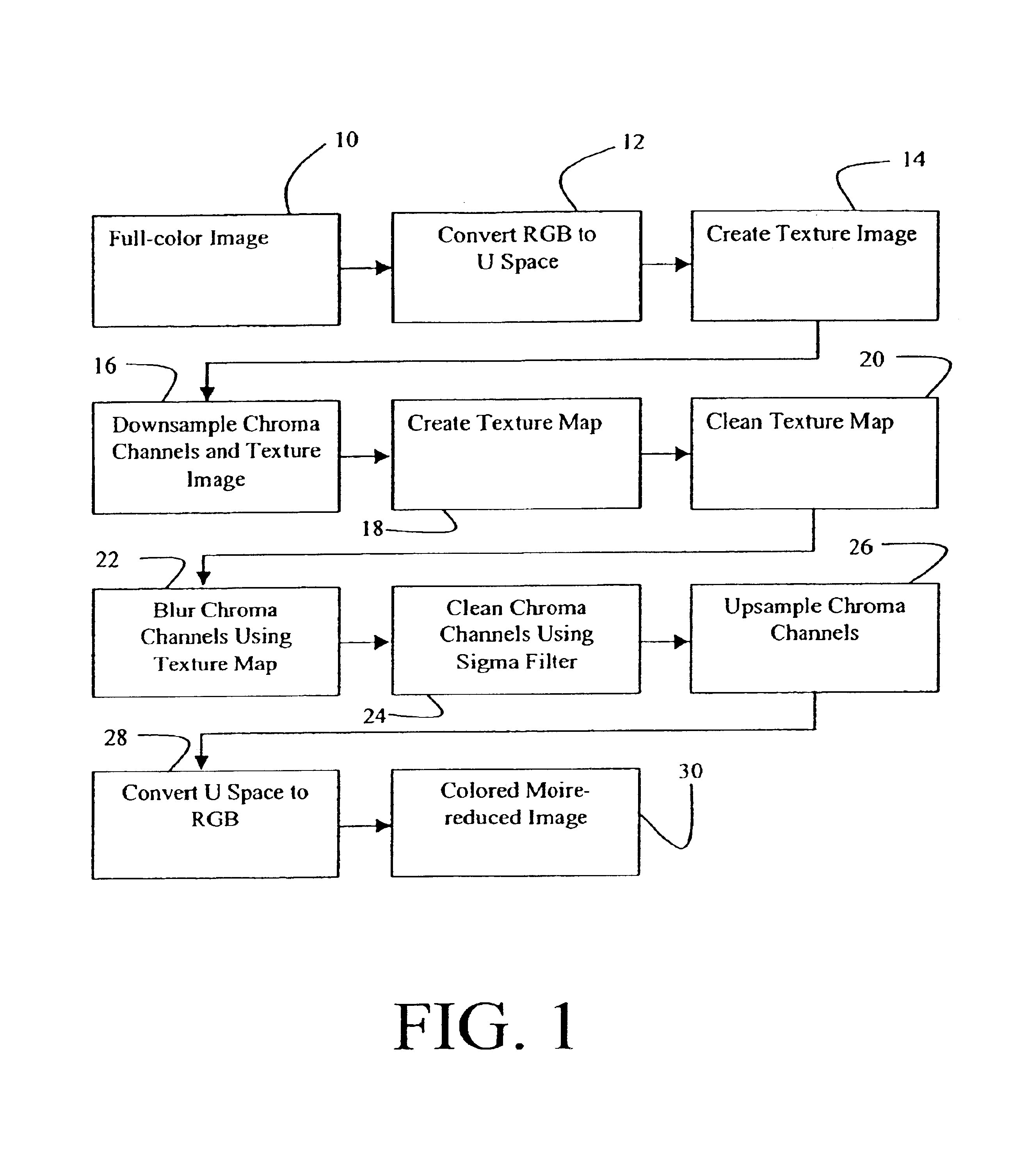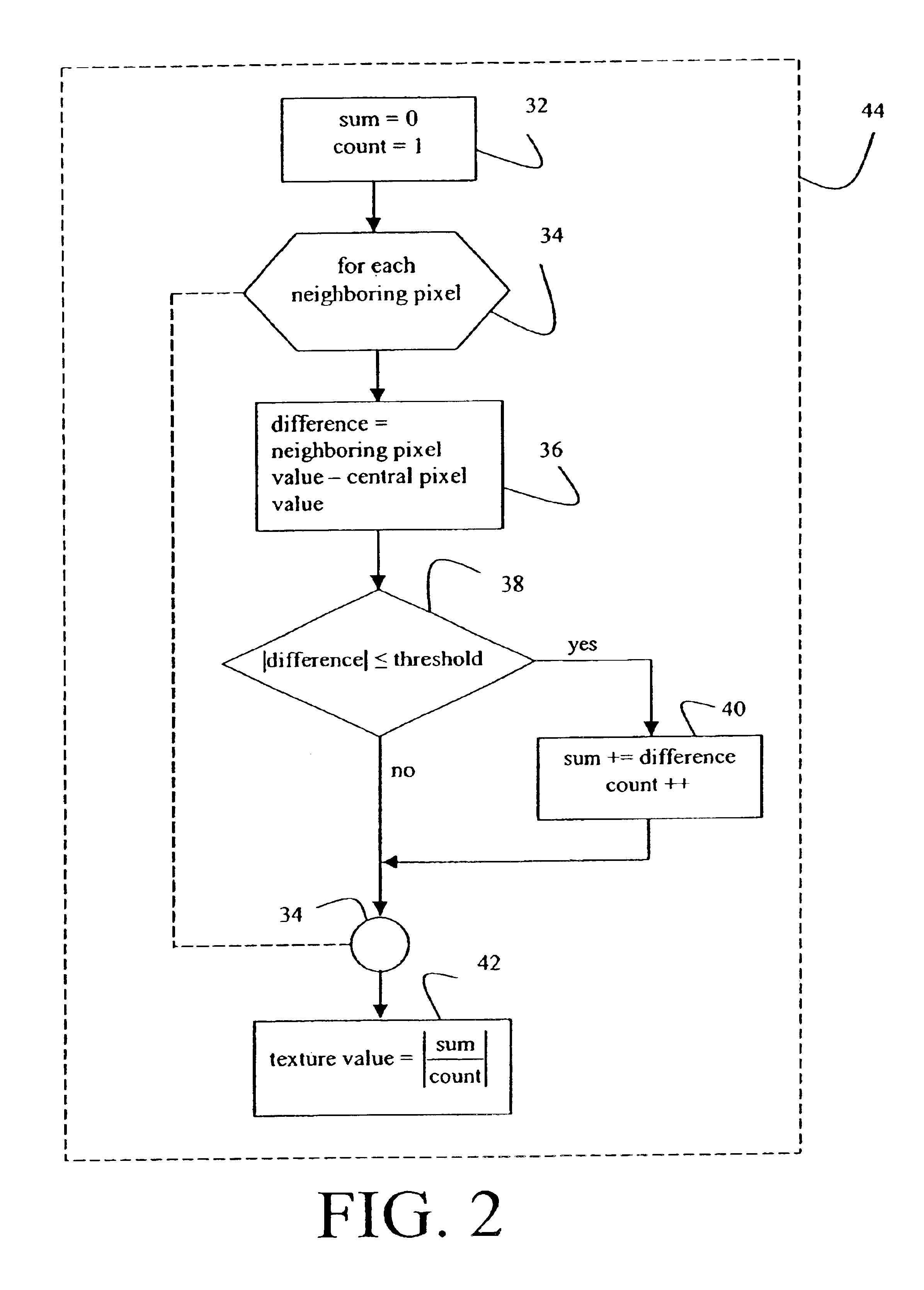Reducing color aliasing artifacts from color digital images
a color digital image and artifact technology, applied in image enhancement, color signal processing circuits, instruments, etc., can solve the problems of only addressing high frequency chrominance noise, affecting the accuracy of color moiré, and reducing the computation time. , the effect of reducing the complexity of the computational method
- Summary
- Abstract
- Description
- Claims
- Application Information
AI Technical Summary
Benefits of technology
Problems solved by technology
Method used
Image
Examples
Embodiment Construction
[0031]FIG. 1 is a block diagram describing the invention. The method begins with a full-color image (block 10). It is assumed this image is in a standard red, green, blue (RGB) color representation. The image converted from RGB space into U space (block 12). U space as used herein is defined by Eqs. 1-2. Equation 1 transforms RGB data into U space data and Eq. 2 transforms U space data into RGB data. In Eqs. 1 and 2, Y stands for luma or luminance, C1 stands for the first chroma or chrominance channel, and C2 stands for the second chroma or chrominance channel. (YC1C2)=(010-1412-14-12012)(RGB)(1)(RGB)=(1-2-11001-21)(YC1C2)(2)
[0032]The first operation upon the U space image is to produce a texture image (block 14). The texture image is defined as an image that has “random” or pseudo-random high frequency elements. A modification of the standard sigma filter method is used to produce the texture image. See FIG. 2. For each (central) pixel in an image (block 44), a summing and a coun...
PUM
 Login to View More
Login to View More Abstract
Description
Claims
Application Information
 Login to View More
Login to View More - R&D
- Intellectual Property
- Life Sciences
- Materials
- Tech Scout
- Unparalleled Data Quality
- Higher Quality Content
- 60% Fewer Hallucinations
Browse by: Latest US Patents, China's latest patents, Technical Efficacy Thesaurus, Application Domain, Technology Topic, Popular Technical Reports.
© 2025 PatSnap. All rights reserved.Legal|Privacy policy|Modern Slavery Act Transparency Statement|Sitemap|About US| Contact US: help@patsnap.com



